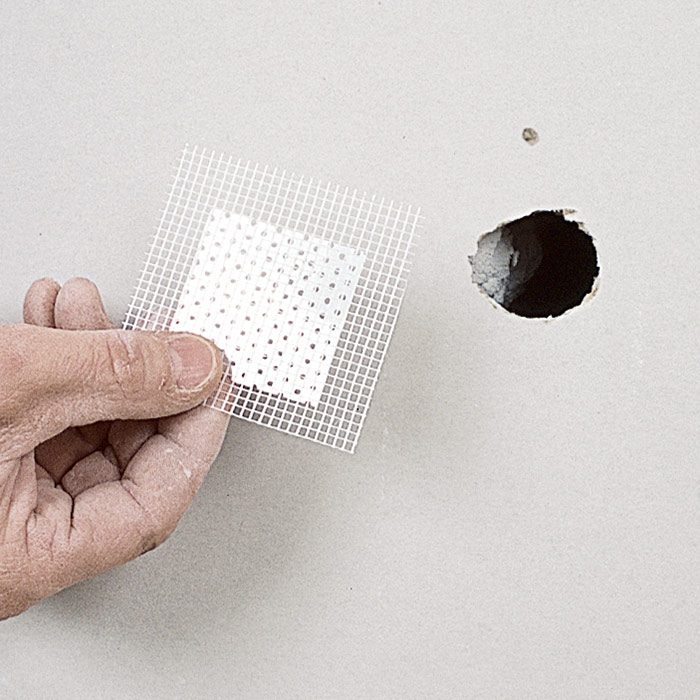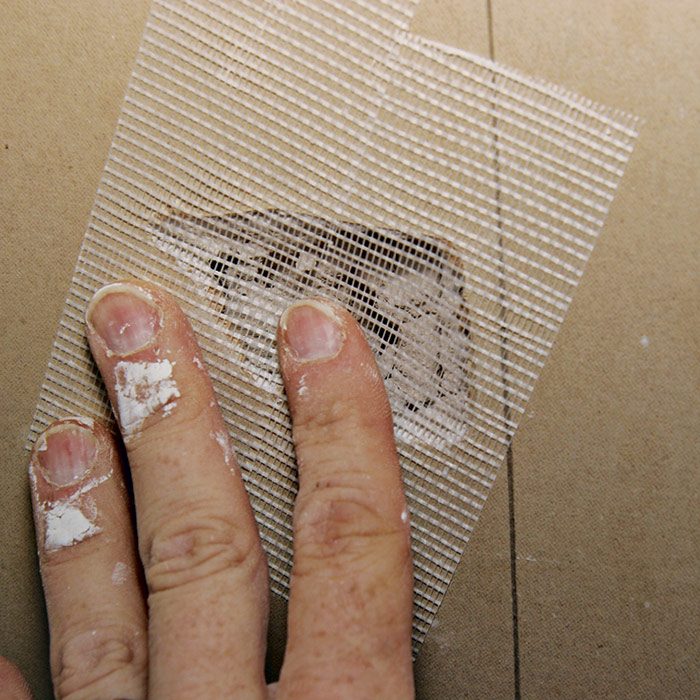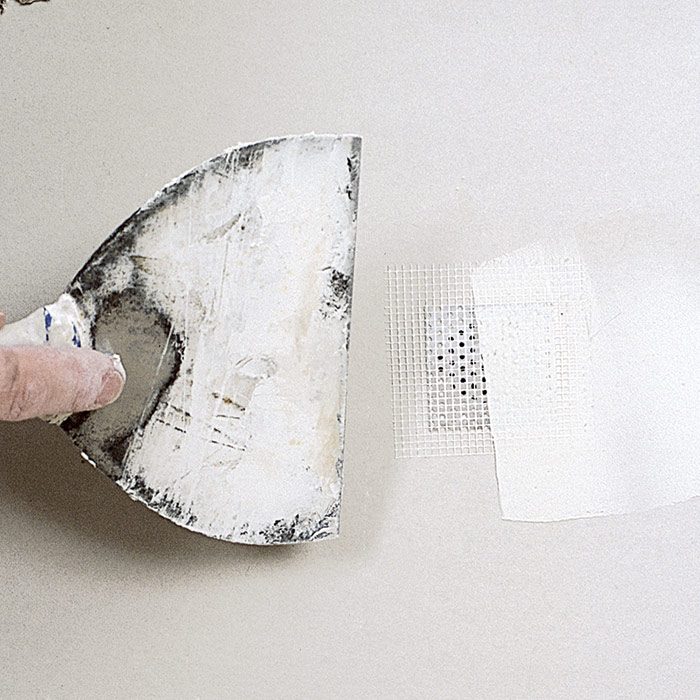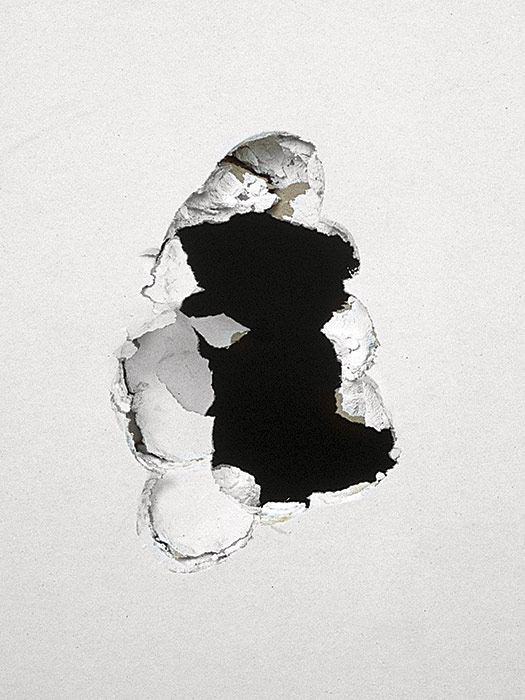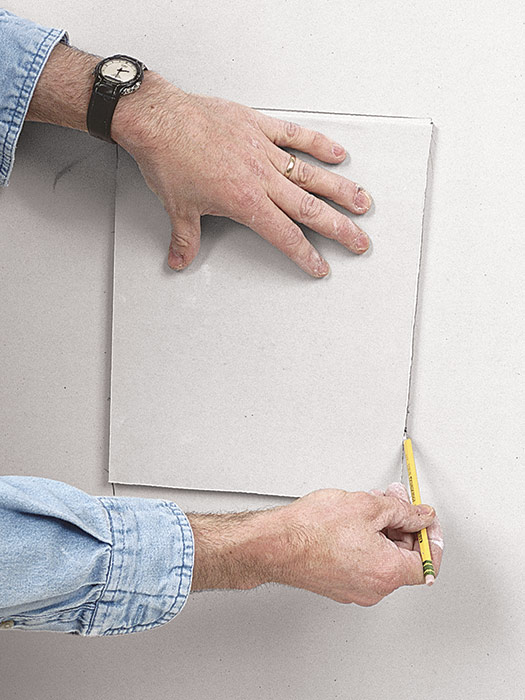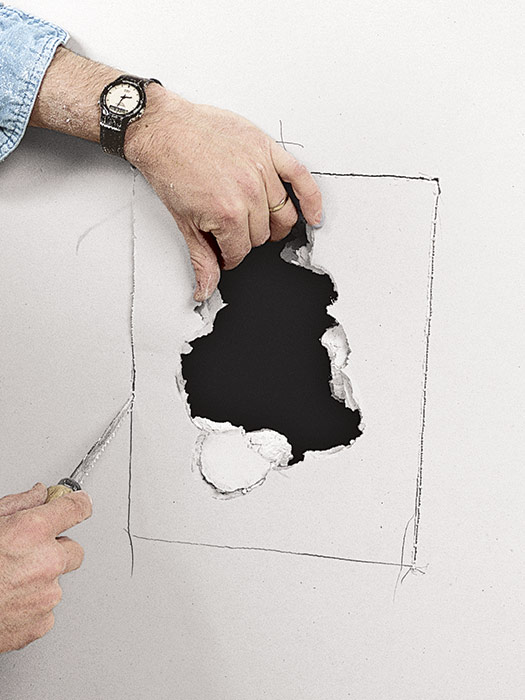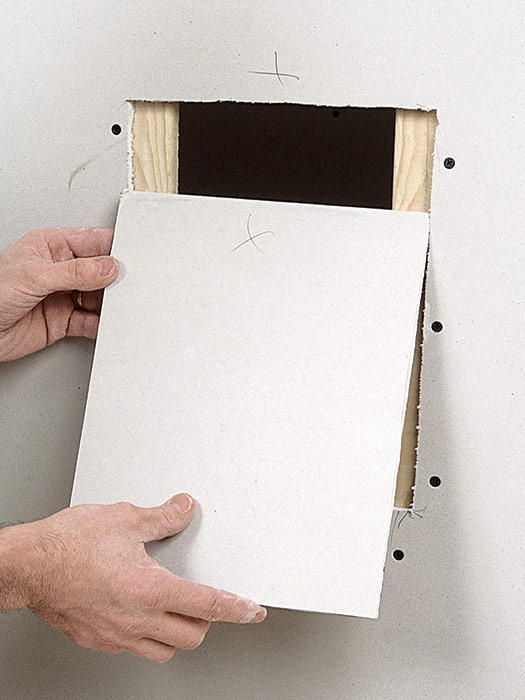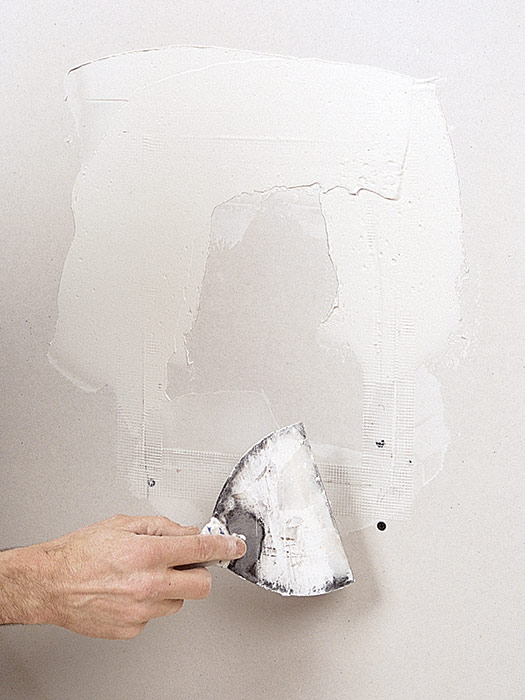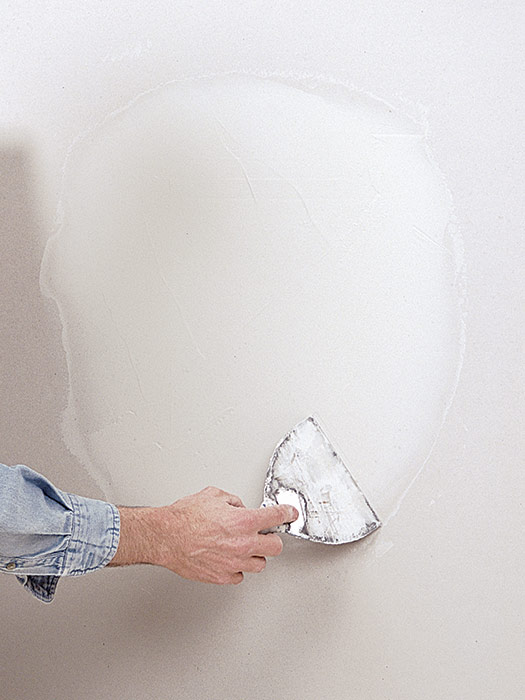Repairing Holes in Drywall
Here's how to fix everything from a ding from a doorknob to a much larger patch job.
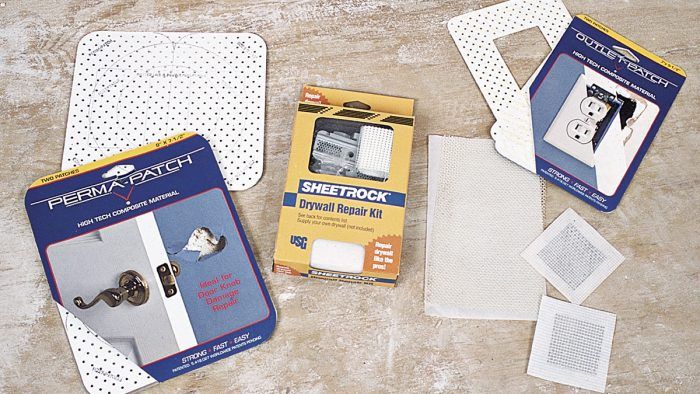
Holes in the drywall surface that result from long-term wear and tear can range from small nail punctures to large gouges. The extent of the repair depends on the size of the hole. Nail holes, nicks, and small dents can simply be covered with compound; small holes require paper or mesh tape for reinforcement; and larger holes may require the use of furring strips to support a drywall patch.
Repairing small holes
A small nail hole (such as that left when a picture hung on a wall is repositioned) can usually be filled with just one or two coats of compound. Remove any loose material first and depress the area around the hole slightly with the handle of a utility knife.
Small holes or dents created when a blunt object, such as a doorknob, hits a wall can usually be repaired without major work. Completely cover the damaged area with mesh tape, crossing the tape over the hole. Depending on the size of the hole, you may be able to fill it with joint compound before applying the tape. Next, apply joint compound over the tape with just enough trowel pressure to force compound through the tape. Feather the edges of the compound and do not build up the center too much; otherwise, you’ll create a bump that will be visible in certain lighting. Apply the second and third coats, feathering the area further and keeping the center even.
Repairing large holes
If an area is badly damaged, cut it back until you reach solid drywall. To make the repair, cut a drywall patch and use it as a template to form the damaged area into a square, rectangle, or circle. Once the damaged area is removed, the opening will probably be too large to repair with mesh tape and compound alone. An actual piece of drywall will be used and it has to be attached in some way. To provide a fastening surface for the patch, use a furring strip (or strips) cut about 6 in. longer than the hole. Slide the furring into the hole and secure it in place with drywall screws fastened through the panel and into the furring. Cut and shape the patch to fit the hole, and then screw the patch onto the furring.
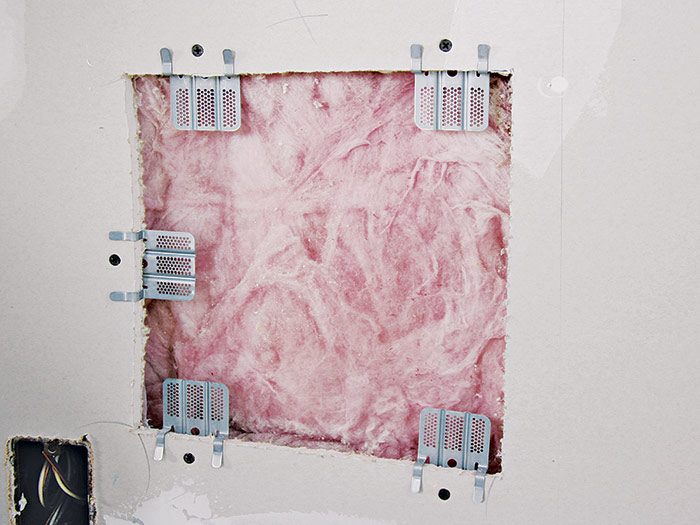
Now you’re ready to tape the patch. First, fill in any large gaps with joint compound, and then cover the edges with fiberglass-mesh tape. Cover the tape with a thin layer of joint compound. Once again, be sure to feather the edges properly and be careful not to build up the patched area too much. Larger holes require at least three coats of joint compound to be concealed properly. Because the patch is secured to the panel and is a solid part of the drywall, it is unlikely to crack or come loose. For really large holes, furring strips won’t be effective and you’ll have to cut the drywall back to the nearest framing member and add cross framing, as when eliminating a door or window.
Repairing Large OpeningsLarge holes—anything larger than your hand—should be trimmed back to solid drywall, furred out, and patched.
|

